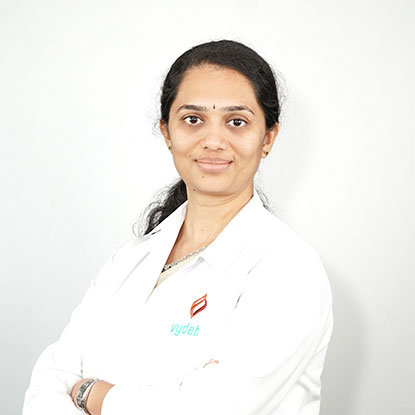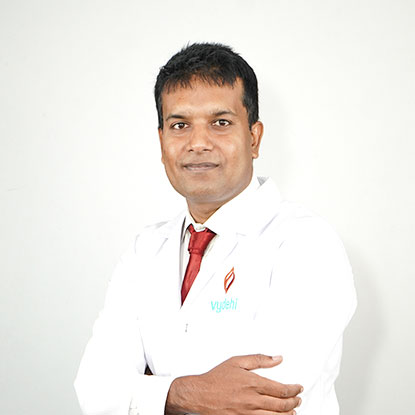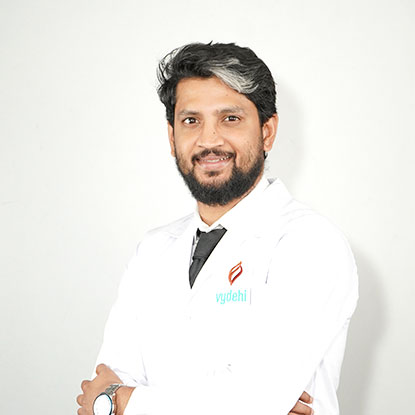
The Department of Radiation Oncology commissioned the state-of-the-art machine, the laser guarded Image guided Radiation therapy (IGRT) and respiratory gating along with IMRT-the intensity modulated radiation therapy, one of its own in the Asia in 2007.This highly specialized department provides services to the treatment of Brain, Head and Neck, Thoracic, Abdominal, Genito-urinary and Extremity tumors. The facility was upgraded to VMAT (Volumetric modulated Arc Therapy- Rapid Arc) in February 2013.
The second linear accelerator machine, Versa HD -Stereotactic Precision Radiotherapy unit (Triple F) was inaugurated on 6th February 2017. Featuring high precision beam shaping and tumor targeting, Versa HD is designed with new capabilities to provide a faster and more accurate treatment for a wider range of cancers. Versa HD offers both conventional and stereotactic treatments. Stereotactic Radiosurgery (SRS) and Stereotactic Body Radiation Therapy (SBRT) are important alternatives to invasive surgery, especially for patients who are unable to undergo surgery and for tumors and abnormalities that are hard to reach and located close to vital organs.
Brachytherapy is commonly used as an effective treatment for cervical, prostate, breast, head & neck and skin cancer and can also be used to treat tumors in many other body sites. Brachytherapy can be used alone or in combination with external radiation therapy. As the radiation sources can be precisely positioned at the tumor treatment site, brachytherapy enables a high dose of radiation to be applied to a small area. We offer MRI based volume optimized intracavitary brachytherapy for cervical cancer using MRI compatible applicators.-Treatment we offer are –ICBT , ISBT , SORBO , ILRT.
Total Skin Electron Radiation Therapy (TSET) in Bangalore at Vydehi, a specialized treatment for lymphoma where the entire skin is treated with electrons. The technique is time consuming to develop and carry out on routine basis. A rigorous quality assurance program needs to be the part of treatment and hence it is being offered at very few selected centers including ours.

MBBS,MD , DNB
Karnataka State Medical
Council Registration Number
37870

MBBS,MD
Karnataka State Medical
Council Registration Number
80790

Associate Professor
MBBS,MD
Karnataka State Medical
Council Registration Number
23870

MBBS,MD, DNB
Karnataka State Medical
Council Registration Number
94829

MBBS,MD
Karnataka State Medical
Council Registration Number
119229

MBBS,MD
Karnataka State Medical
Council Registration Number
120730

MBBS,MD
Karnataka State Medical
Council Registration Number
121767

MBBS,MD
Karnataka State Medical
Council Registration Number
130587
In 3DCRT, a computed tomography (CT) scan is used to design a radiation therapy treatment. The CT scans help us determine the radiation target volumes and critical structures. The radiation beams from different directions are designed to match the shape of the tumour. This helps to deliver a conformal dose of radiation to the tumour while sparing the normal tissue surrounding the tumour as much as possible. Different cancer types have seen improved outcomes from 3D conformal radiation therapy, including brain cancer, head and neck cancer, liver cancer, lung cancer, and prostate cancer.
IMRT uses advanced computer programs to calculate and deliver radiation to cancer cells. We recommend it for tumours that are located close to critical organs and tissues in the body. Using this method, higher and more effective doses of radiation can be given while limiting damage to the healthy tissues and organs. It also increases the chance for a cure and lessens the likelihood of side effects. The sites where IMRT is preferred are prostate, head and neck, lung, brain, and gastrointestinal. VMAT is another latest technology that has revolutionised radiation therapy. The technology improves dose conformity while significantly shortening treatment times. It delivers treatments two to eight times faster than other dynamic treatments available to date. It also increases precision – creating a winning combination that enables physicians to improve caring standards and treat more patients.
Traditional forms of radiation therapy expose extensive areas of normal tissue to unnecessary radiation. This leads to unacceptable side effects, especially in critical areas like the brain and lungs. Stereotactic radiosurgery (SRS) and Stereotactic Body radiation therapy (SBRT) are advanced and modernised forms of radiation therapy. They help to deliver high dose radiation to a small, focused area. It minimises the effect on nearby organs and reduces treatment-related side effects. SRS and SRBT are a boon, especially for patients who cannot undergo surgery and for tumours and abnormalities located close to vital organs. SRS delivers a great dose of radiation on a single day. SBRT has a fractionated treatment schedule. SRS is used to treat brain tumours, arteriovenous malformations (AVMs), and functional disorders. SBRT is used to treat malignant small-to-medium size tumours in lungs, liver, spine, prostate, etc. One more benefit of these treatments over conventional radiation treatment is that the treatment durations are much shorter. Where two-year success rates for regular treatment vary from 30 to 40 per cent, the success rates for SBRT range from 80 to 90 percent in some tumours.
Our centre was the first to launch laser guarded image-guided radiation therapy in Southeast Asia. Using Image-guided radiation therapy (IGRT) during radiation therapy improves the precision and accuracy of treatment delivery. At Vydehi, we use cone-beam CT (CBCT). We use CBCT with intensity-modulated radiation therapy (IMRT), SRS, or SBRT, an advanced mode of high-precision radiotherapy.
Vydehi was the first to commission respiratory gating in India. The real-time Position Management™ (RPM) system allows clinicians to correlate tumour position in relation to the patient’s respiratory cycle. The system measures the patient’s respiratory pattern and range of motion using an infrared tracking camera and a reflective marker to display them as a waveform. Then the gating thresholds are set when the tumour is in the desired portion of the respiratory cycle. These thresholds determine when the gating system turns the treatment beam on and off. The RPM system facilitates the treatment of the lungs, liver, and pancreas, and helps minimise the dose to the heart in breast treatments.
Total skin electron radiation therapy (TSET): This treatment is delivered to a type of lymphoma. The entire skin is treated with electrons. The technique is time-consuming to develop and carry out routinely. A rigorous quality assurance program needs to be the part of treatment. Hence, it is being offered at very few selected centres.
Radiotherapy, where a sealed radiation source is placed inside or next to the area requiring treatment, is brachytherapy. Oncologists commonly use it as an effective treatment for cervical, prostate, breast, head & neck, and skin cancer. It can also treat tumours in many other body sites. Brachytherapy can be used alone or in combination with external radiation therapy. As we can precisely position the radiation sources at the tumour treatment site, brachytherapy enables a high dose of radiation to be applied to a small area.
Vydehi is one of the very few centres in the country that offers MRI based volume optimised intracavitary brachytherapy for cervical cancer using MRI compatible applicators.
Medical use of x-rays for diagnosis and treatment has proven to be immensely beneficial to the society at large. Vydehi Institute of Medical Sciences & Research Centre, Bangalore is licensed to operate various x-ray and gamma ray radiation generating equipments.
(Use appropriate search filter to locate Vydehi)
(refer page.4)
The institute is governed by the regulations stipulated by Atomic Energy Regulatory Board, Mumbai. The Atomic Energy (Radiation Protection) Rules, 2004 [AE(RP)R-2004], promulgated under the Atomic Energy Act, 1962, provides the legal framework for the safe handling of radiation generating equipment (in this context – X-ray equipment). As per Rule 3 of AE(RP)R-2004 it is mandatory for all the manufacturers/Suppliers/Users of x-ray equipment, to obtain requisite ‘License’ from AERB for carrying out any of the above activities.
The Department of Radiation Oncology has Mega Voltage X-ray Medical Linear Accelerators: 2Nos; Gamma Radioactive source Brachytherapy: 1No and CT simulator: 1No. There are 29 diagnostic x-ray equipments housed in various approved locations in Department of Radiology, Cardiology, Orthopedics, Urology, Neurosurgery and Dental.
The staff working in radiation area are enrolled in Personal Monitoring Services (PMS), as per the regulations stipulated by AERB, Mumbai.
DIRECTOR, VIMS & RC is the licensee for all regulatory affairs. The designated Radiological Safety Officer (RSO) of the institute is Dr. S. Sowmya Narayanan. Institute has Radiation Safety Committee in place with Director as Chairman of the committee, RSO as Secretary of the committee. Members of the committee are all the HoDs using Radiation Generating equipment’s.
The Department of Surgical Oncology conducts major cancer surgeries and related reconstructions. Experienced cancer surgeons, supported by cutting-edge equipment and top-notch infrastructure, have performed a wide range of extensive and complex cancer surgeries.


 Emergency Number
Emergency Number